Lapse of Keyboard at Internationalized Domain Name
LOKIDN is a new vector for Homograph Attacks that has not been discovered before.
EDB-ID: 45567
LOKIDN
1.0. Introduction 2.0. IDN Structure 3.0. Summary 4.0. How is it exploited? 4.1. Visual Resources Exploitation 4.2. Style (CSS) Resources Exploitation 4.3. Routing to Harmful Target 4.4. LOKIDN Vulnerability with Ready-Made Scripts 4.5. Exploitation Mail Address Belonging To Domain Name 4.6. Reverse Logic Exploitation 5.0. Analysis of Possible Situations 5.1. Instantiation 5.2. High-Risk IDN 6.0. How to Test and Get Protected? 7.0. About me 8.0. Annexes
1.0. Introduction
With the rapidly developing and popularized world wide web, interest in private domain names has also increased considerably. Today, if we consider both corporate/organization and individual based, it is very important to get a domain name suitable for branding and attention purposes. The increasing need for domain name in the world has given birth to the lack of domain name. It has become almost impossible to rent the desired domain name with the popular TLD (top level domain) extensions(.com .net .org). This has led to the emergence of a new world-wide idea. The countries have been given the opportunity to rent domain names in their native languages and alphabets. In this way, the problem of lack in possible domain names has been desired to be solved. This technology along with phishing attacks also brought the "Lapse of Keyboard at Internationalized Domain Name (LOKIDN)" vulnerability too. This type of vulnerability was officially discovered for the first time by me.2.0. IDN Structure
As domain names, special characters can be used that are not part of the ASCII character set, thanks to IDN architecture. Normally, domain names are restricted to ASCII character set which comprise characters "a-z, A-Z, 0-9 and '-'". So, how does a domain name based on IDN architecture hence with UNICODE is interpreted to meet regular architecture and vice verse? The UNICODE characters are converted to their corresponding ASCII character format to ensure communication with the server. For instance; the domain name "lokıdn.com" is interpreted by IDN is "xn--lokdn-p4a.com". That is, when you buy domain name "lokıdn.com", you actually register for "xn--lokdn-p4a.com". IDN specification is accepted by many countries now and actively being used by them.3.0. Summary
Complex web applications developers can make technical mistakes in the application development or update phases. Indeed, many of the security vulnerabilities are created by developers or managers. Developers can perform keyboard typing mistakes while showing reference in the app. IDN domains possess security vulnerability in the direction of these reference errors. LOKIDN vulnerability can occur in country-specific keyboards that use standard Latin alphabet characters that overlap with standard field name (ASCII) characters. Due to the alphabet set of the developer or administrator keyboard, the field name may be incorrectly referenced. This is similar to the fact that security precautions for database inquiries are not taken into web applications due to a small amount of hesitation which cause injection vulnerabilities. Therefore, the attacker can intervene into the system by exploiting this types of security vulnerabilities left by developer or administrator. LOKIDN vulnerability occurs when system administrator types "lokıdn.com" instead of "lokidn.com" domain name. By exploiting this vulnerability, the attacker can hire the "lokıdn.com" domain name or “xn--lokdn-p4a.com”, which has never been leased and suitable for renting, to intervene in the sections where the system administrator made a mistake. The vulnerability can also occur with inverse logic.4.0. How is it exploited?
Lack of Keyboard at Internationalized Domain Name (LOKIDN) vulnerability can be discovered in many different areas. Exploitation procedures can be carried out in the area where the vulnerability exists. We will examine what exploitation can be done with the general headings.4.1. Visual Resources Exploitation
We see a link that is manually placed on the target site. This source code belongs to the site "lokidn.com". It seems that LOKIDN is weak because of keyboard failure.img class="center" src="http://lokıdn.com/images/banner.jpg"
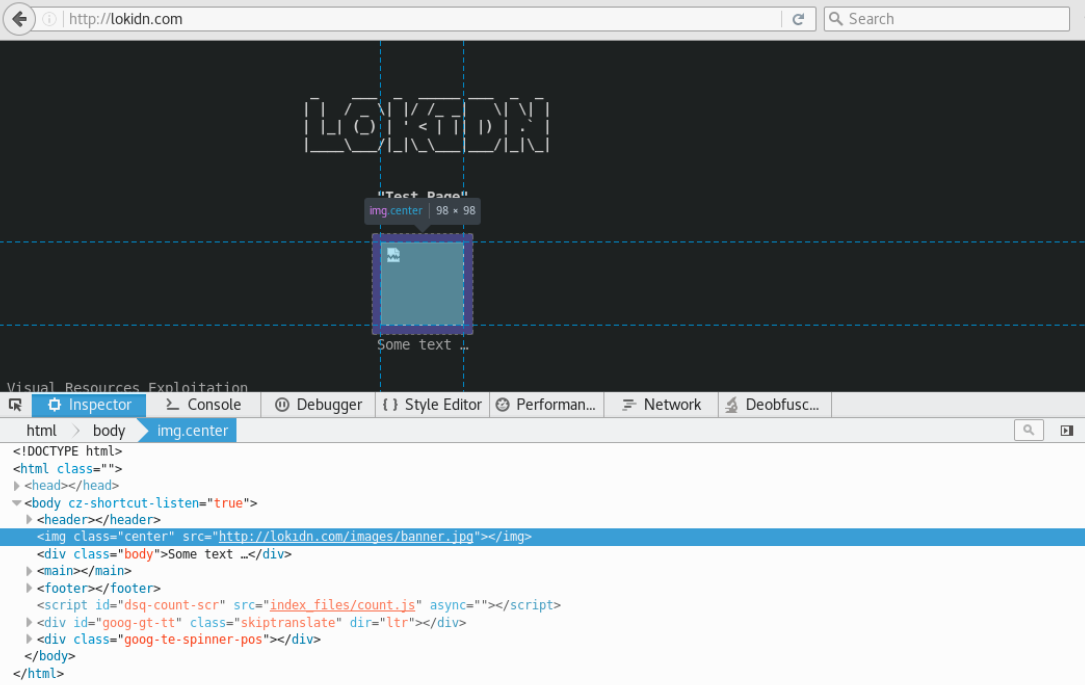
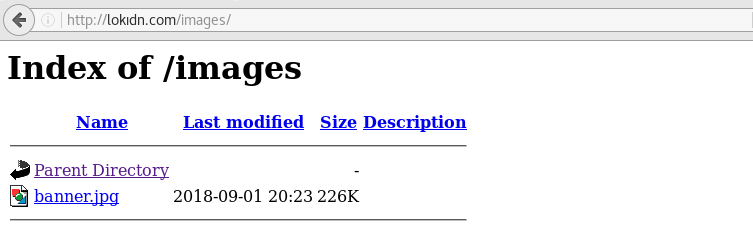 When we renew the address "lokidn.com", we see an image saying that the site is hacked.
When we renew the address "lokidn.com", we see an image saying that the site is hacked.
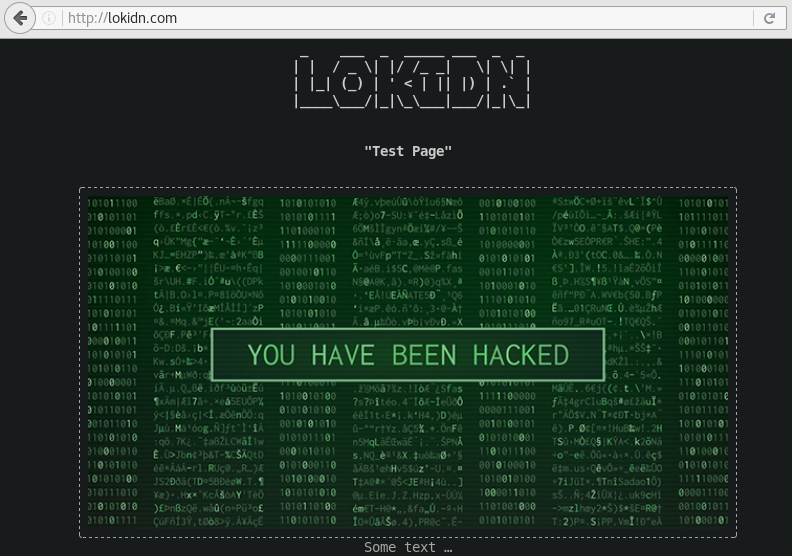 The attacker can do similar actions with LOKIDN vulnerabilities left on the site logos, background, gallery, or visual sources in the ad space.
The attacker can do similar actions with LOKIDN vulnerabilities left on the site logos, background, gallery, or visual sources in the ad space.
4.2. Style (CSS) Resources Exploitation
An attacker can disrupt or change the appearance of the site with a LOKIDN vulnerability that will be explored in CSS resources, which are indispensable for websites. In our example, class "center1" does not react correctly due to CSS loss.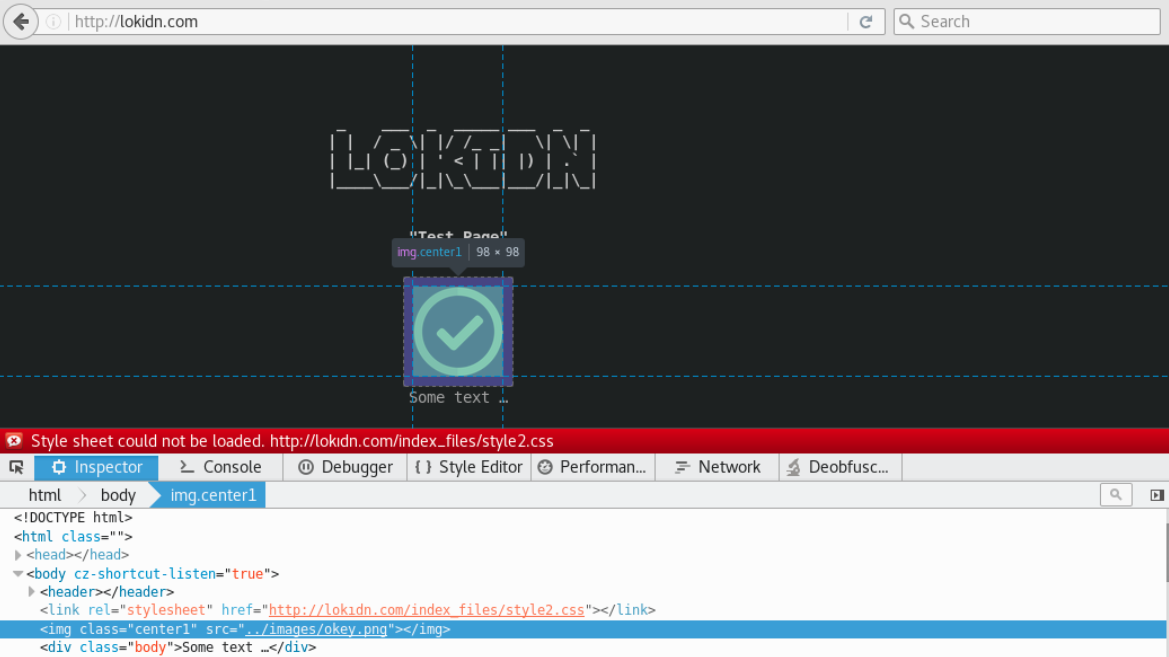 The website is vulnerable to LOKIDN and with that the path of file is exploited.
The website is vulnerable to LOKIDN and with that the path of file is exploited.
 You can now change the visual size of the style2.css file by creating a class called "center 1", which we already know the name.
You can now change the visual size of the style2.css file by creating a class called "center 1", which we already know the name.
img.center1 {
display: block;
margin-left: auto;
margin-right: auto;
width: 200%;
height: 200%;
}
By increasing the sizes up to 200% and covering the whole site of the visual, the site can be distorted.
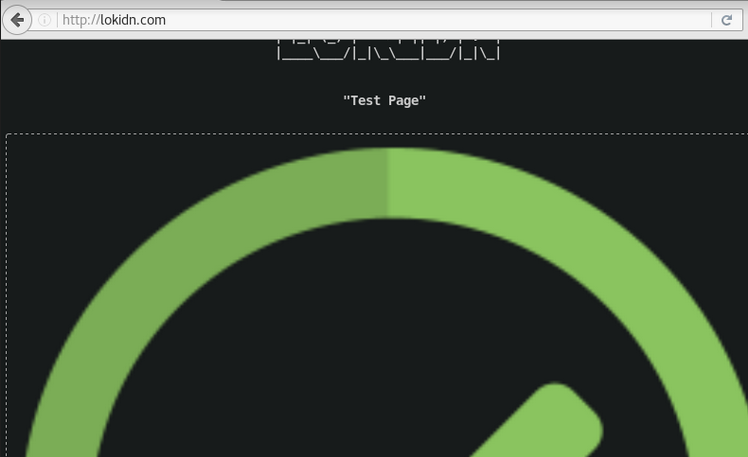 The site's underlying CSS file may also be lost due to the LOKIDN vulnerability. An attacker can play by changing the style of all areas of the site in the same way.
The site's underlying CSS file may also be lost due to the LOKIDN vulnerability. An attacker can play by changing the style of all areas of the site in the same way.
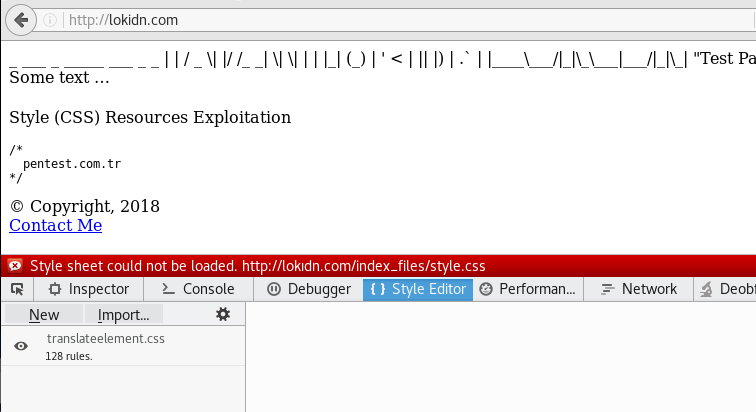 It seems that the site's style.css file can not be called due to LOKIDN vulnerability.
When the source code is examined, it is determined that the "menu" and "body" generic class names are used.
In this direction, a class such as the following can be placed in the content of the file "lokıdn.com/index_files/style.css".
It seems that the site's style.css file can not be called due to LOKIDN vulnerability.
When the source code is examined, it is determined that the "menu" and "body" generic class names are used.
In this direction, a class such as the following can be placed in the content of the file "lokıdn.com/index_files/style.css".
body {
background-color: #171b1b;
background-image: url(../index_files/Hacked.png);
}
At this point, the attacker can place the desired image in the background of the site.
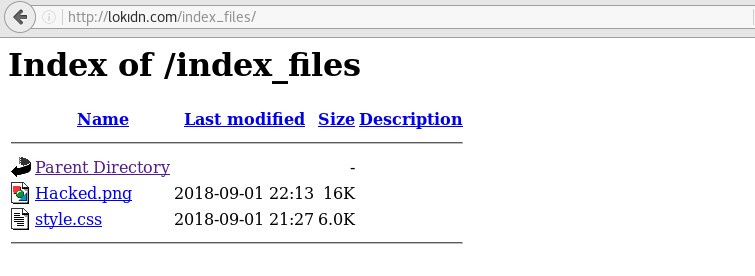
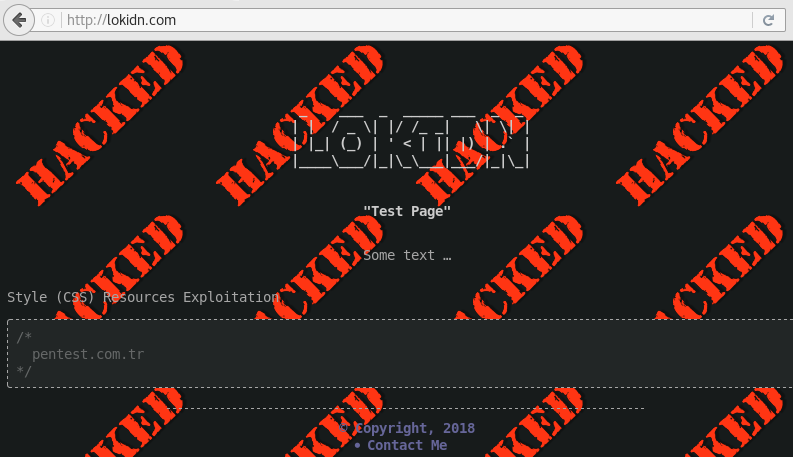 As shown in the examples, the attacker can modify the CSS file to shape the site with LOKIDN vulnerability.
As shown in the examples, the attacker can modify the CSS file to shape the site with LOKIDN vulnerability.
4.3. Routing to Harmful Target
LOKIDN vulnerability can be found not only in the referenced file path links, but also in ordinary link and routing links. It is possible to make a typing error while redirecting to a different page in a different part of the web application or in the application. a href="http://lokıdn.com/blog.php” target="_blank">Blog /a
?php
$line = date('Y-m-d H:i:s') . " - $_SERVER[REMOTE_ADDR]";
file_put_contents('ziyaretci.log', $line . PHP_EOL, FILE_APPEND);
?
 If this link is also a download link at the same time, the attacker can place the file in the source code with the content that can provide remote connection such as trojan, shellcode
The attacker can also exploit the LOKIDN vulnerability by using many phishing methods.
If this link is also a download link at the same time, the attacker can place the file in the source code with the content that can provide remote connection such as trojan, shellcode
The attacker can also exploit the LOKIDN vulnerability by using many phishing methods.
4.4. LOKIDN Vulnerability with Ready-Made Scripts
Many ready-made scripts and plug-ins belonging to these scripts can automatically translate any text into English or ignore special characters that it can not identify. Such scripts do not give any errors during the translation process and they reflect the input written by the administrator with their own logic. Therefore, the administrator may not be aware of the possible LOKIDN vulnerability. As an example, let's suppose you have typed " http:/lokıdn.com ", the custom script or plugin which is in used puts this entry into the application by translating it into "http://lokidn.com" or "http://lokdn.com". In this direction, special scripts can cause LOKIDN vulnerability.4.5. Exploitation Mail Address Belongs To Domain Name
LOKIDN vulnerability can also occur with private mail. The developer or administrator can make a typing error while specifying the mail address as in other LOKIDN vulnerability variants. We see that an info mail link like the one below is placed on the website " lokidn.com ". a href="mailto:info@lokıdn.com">Contact Me /a
4.6. Reverse Logic Exploitation
The LOKIDN security vulnerability does not only occur by typing UNICODE characters instead of ASCII characters. If the system owner intentionally purchases the domain name "lokıdn.com" and the owner types "lokidn.com" by mistake in the source code a LOKIDN vulnerability occurs. In this case, vulnerability can also occur with reverse logic.5.0. Analysis of Possible Situations
LOKIDN vulnerability is the result of the writing of the words used in the domain name of the people with the support of the keyboard as the main language. For example It is not possible to make a mistake for a Turkish IDN on the English keyboard. In countries where IDN service can be provided by Latin alphabet, LOKIDN vulnerability may occur if the main keyboard is used. The IDN world map was created by The European Registry of Internet Domain Name (EURid) according to alphabet and country.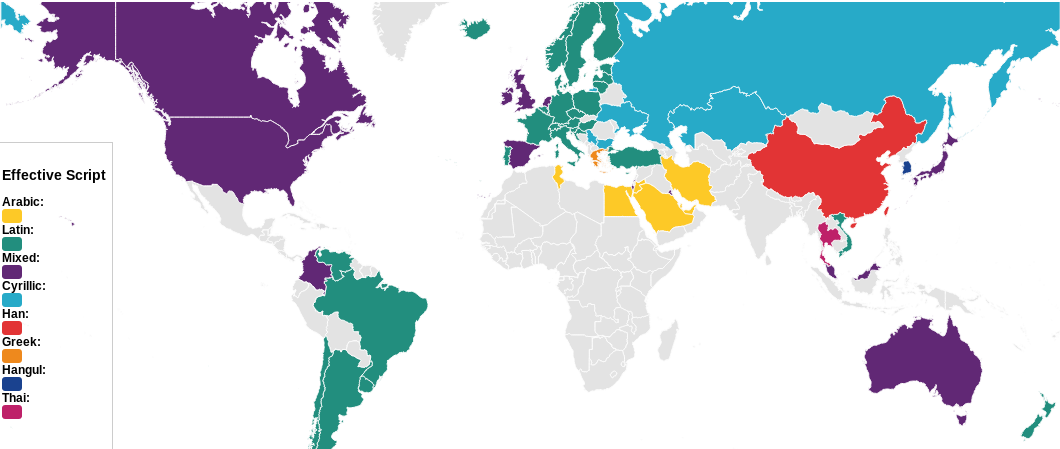 Green labeled countries use Latin alphabet. Countries with purple labeled are mixed. Therefore, it is possible LOKIDN vulnerability in these countries.
A list of characters allowed by EURID for IDN structure is provided at annex.
You can access the link at the end of the paper.
Green labeled countries use Latin alphabet. Countries with purple labeled are mixed. Therefore, it is possible LOKIDN vulnerability in these countries.
A list of characters allowed by EURID for IDN structure is provided at annex.
You can access the link at the end of the paper.
5.1.Instantiation
LOKIDN vulnerability can also occur when characters belonging to different alphabets are similar to each other.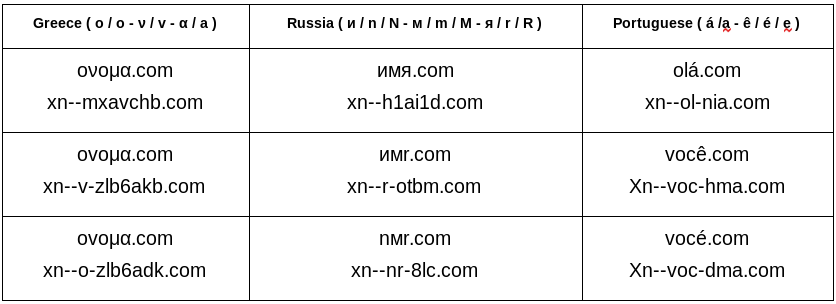 it is possible to make mistakes like all the character types.
Let's make a sample of these letters; ( ì - í - ï - ı - i / ό - ὂ - ὄ - ὅ - ö - o )
We can use these characters for IDN. Therefore, it is possible LOKIDN vulnerability.
Example: possible to registry IDN like thats.
it is possible to make mistakes like all the character types.
Let's make a sample of these letters; ( ì - í - ï - ı - i / ό - ὂ - ὄ - ὅ - ö - o )
We can use these characters for IDN. Therefore, it is possible LOKIDN vulnerability.
Example: possible to registry IDN like thats.
 You can access "Homoglyph bundling tables" via Annexes.
You can access "Homoglyph bundling tables" via Annexes.